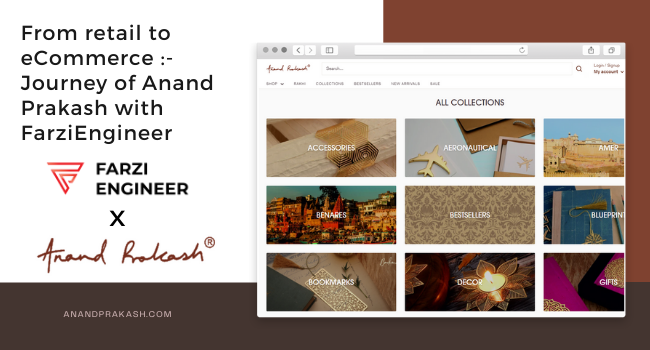In the relentless world of entrepreneurship, where competition often seems just a step behind, the concept of “moats” has been gaining ground. These metaphorical moats are the protective barriers that shield a business from imitation and elevate it above the relentless tide of competitors. They are the bedrock of long-term success and sustainability in the business landscape.
One entrepreneur who understands the significance of moats is Rishubh Satiya, the visionary founder of Plixlife. In a recent conversation, Rishubh unveiled how content, when strategically wielded, can be a potent moat for businesses. His journey with Plixlife serves as a compelling case study in using content not only to establish a brand but also to scale efficiently. In this exploration, we delve into Rishubh’s insights, the strategic importance of content, and why brand building, fortified by time-tested content strategies, stands as a formidable moat in today’s business landscape.
The Genesis of Plixlife
Rishubh Satiya’s entrepreneurial journey began with a dream and a product – Plixlife, a brand focused on health and wellness. Like many startups, Plixlife faced its fair share of initial challenges and stiff competition. However, what set Rishubh apart was his understanding of the significance of moats in business.
In a world where ideas can be easily replicated, the notion of moats, borrowed from Warren Buffett’s investment philosophy, highlights the need for sustainable competitive advantages. These advantages act as protective barriers, making it difficult for competitors to encroach on a business’s territory.
Content as a Moat
Rishubh’s epiphany came in the form of content. He realized that content wasn’t just about marketing; it could be a powerful moat to protect his brand from being overrun by copycat competitors. With this insight, he embarked on a journey to harness the full potential of content.
Content, in this context, doesn’t merely refer to blog posts and social media updates. It encompasses a comprehensive strategy that involves storytelling, engaging with the audience, and creating a brand narrative that resonates. Rishubh recognized that content wasn’t just about conveying a message; it was about building a relationship with the audience.
The Early Days: When Lack of Resources Fuels Creativity
Rishubh Satiya, the brain behind Plixlife, shared an inspiring story of the brand’s early days. Back then, resources were scarce, and there wasn’t a dedicated team to handle content creation. But Rishubh didn’t let that deter him. He took matters into his own hands.
He scripted compelling ads, directed them with a keen eye, operated the camera to capture the perfect shots, and even rolled up his sleeves to edit the videos. Yes, you read that right—Rishubh was a one-man show, wearing multiple hats to ensure that the content met the highest standards.
The Lesson: Quality Content Knows No Excuses
What can we learn from Rishubh’s journey as a content creator in those early days? It’s simple—lack of a team is no excuse for compromising on quality content. No one knows your brand better than you do, and that intimate knowledge can fuel creativity and determination.
Rishubh’s story highlights that the path to success often demands doing whatever it takes, even if it means being a jack-of-all-trades. It’s a testament to the power of determination and creativity in the face of challenges
The Role of Brand Building
Brand building, in the age of cutthroat competition, has assumed paramount importance. A strong brand isn’t just a name; it’s a promise, an identity, and a set of values that resonate with customers. It’s what sets one business apart from another selling a similar product or service.
For Rishubh, brand building became a cornerstone of Plixlife’s strategy. He understood that building a brand takes time – it’s a gradual process that involves consistently delivering on promises and creating a reputation that customers can trust.
The relationship between brand building and content became evident as Rishubh used content to convey Plixlife’s values, mission, and the story behind the brand. Content, in this context, acted as the vehicle through which the brand’s essence was communicated.
Scaling Effectively with Content
One of the remarkable aspects of using content as a moat is its cost-efficiency. Rishubh pointed out that by investing in content, he was able to scale Plixlife at a much cheaper rate than many of his competitors. Content, when done right, can generate organic growth, reduce customer acquisition costs, and foster customer loyalty.
As Rishubh shared his experience, it became clear that content allowed Plixlife to build a loyal customer base. It wasn’t merely about attracting new customers; it was about retaining them by continuously providing value through content.
The Moat Against Copycats
One of the most pressing concerns for businesses today is vulnerability to imitation. In the digital age, it’s easier than ever for competitors to copy products, strategies, and marketing tactics. This is where the moat built by content comes into play.
Content serves as a protective moat because it’s not just about the surface-level aspects of a business. It’s about the deep-seated values, stories, and emotional connections that customers associate with the brand. Copying these elements is far more challenging than replicating a product or service.
Rishubh’s real-life examples of Plixlife’s content-driven success were illuminating. He shared instances where competitors tried to mimic Plixlife’s products but failed to replicate the brand’s essence. Customers recognized the authenticity and depth of Plixlife’s brand, thanks to the moat of content that had been carefully built over time.
The Long-Term Game
Throughout our conversation, Rishubh reiterated his philosophy on business longevity. In a world obsessed with quick wins and instant success, he emphasized the enduring value of content as a moat. Content, he explained, isn’t a one-time effort; it’s a commitment to consistently providing value to your audience.
Rishubh’s insights serve as a reminder that brand building is a slow game. It’s not something that can be started and restarted every few months. It’s a continuous journey that requires dedication, authenticity, and an unwavering commitment to delivering value.
User-Generated Content on Social Media
In the age of social media, the power of user-generated content cannot be overstated. It’s not just about what a brand says; it’s about what customers say about the brand. Rishubh highlighted the importance of user-generated content as a part of the content moat.
When customers become brand advocates and share their positive experiences on social media, it amplifies the brand’s reach and credibility. Their testimonials, reviews, and endorsements act as a testament to the brand’s value.
User-generated content also fosters a sense of community around the brand. Customers feel heard and valued when their content is shared or featured by the brand. It creates a cycle of positive engagement that further strengthens the content moat.
Conclusion
In this enlightening conversation with Rishubh Satiya, we’ve unraveled the power of content as a moat in business. Entrepreneurs and business enthusiasts alike can take away valuable lessons from Rishubh’s journey with Plixlife. The transformative power of content, when harnessed effectively, can set a business apart, protect it from copycats, and pave the way for long-term success.
As you embark on your entrepreneurial journey or seek to fortify your existing business, remember that content isn’t just about what you say; it’s about the story you tell, the relationship you build, and the moat you construct to safeguard your brand in the turbulent waters of competition.





